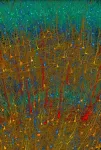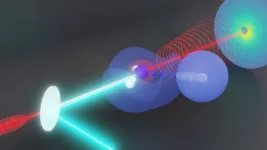(Press-News.org) The offspring of adolescent and young adult women with a history of cancer face a higher risk of birth defects, according to new research from UTHealth Houston.
A study led by Caitlin C. Murphy, PhD, MPH, associate professor of health promotion and behavioral sciences at UTHealth Houston School of Public Health, was published recently in Cancer Epidemiology, Biomarkers & Prevention.
“Concerns like the health of future children are at the top of mind for many young adults diagnosed with cancer, but they are already so overwhelmed at the time of diagnosis with navigating cancer-related information,” said Murphy, who was first author of the study. “Our findings can be used in clinical practice to provide counseling and inform this population of the potential risks and reproductive consequences of cancer, at the time of diagnosis and beyond.”
Researchers examined birth defects in 6,882 offspring, ages 12 months and younger, of women ages 15-39 at the time of cancer diagnosis, between 1999 and 2015. Common cancer types were thyroid (28.9%), lymphoma (12.5%), and breast (10.7%), and 24% of women received chemotherapy.
Overall, risk of any birth defect was higher in offspring of women with a history of cancer (6.0%) compared to offspring of women without cancer (4.8%), although rare in both groups.
There was also an increased risk of specific types of defects in the offspring of women with a history of cancer, including eye or ear (1.39 times more likely), heart and circulatory (1.32 times more likely), genitourinary (1.38 times more likely), and musculoskeletal defects (1.37 times more likely).
Although birth defects are rare, Murphy said young women making decisions about pregnancy and prenatal care should receive appropriate counseling and surveillance. Screening offspring for birth defects could also provide an opportunity for targeted prevention, she said.
“Many studies now demonstrate relationships between cancer and birth defects; children with birth defects also have a higher risk of cancer,” Murphy said. “The more we learn about how they are related to each other, the more we can identify opportunities to prevent both.”
Philip J. Lupo, Ph.D., with Baylor College of Medicine, was senior author of the study. Co-authors with UTHealth Houston School of Public Health include Andrea C. Betts, MPH; Marlyn A. Allicock, Ph.D., MPH; L. Aubree Shay, Ph.D., MSSW, in San Antonio; and Ph.D. student Jennifer S. Wang. Other co-authors included Sandi L. Pruitt, Ph.D., with UT Southwestern Medical Center; and Barbara A. Cohn, Ph.D., MPH, with Public Health Institute in Berkeley, California.
END
Offspring of teen, young adult women with cancer history more likely to have birth defects
2023-10-06
ELSE PRESS RELEASES FROM THIS DATE:
Benefits of psychedelics in obsessive-compulsive disorder: in search of evidence
2023-10-06
Intrusive thoughts, involuntary repetition of undesirable gestures and behaviors combined with high anxiety... Obsessive-compulsive disorder (OCD), a disabling condition, affects around 2% of the population, regardless of age. It is a strong vector of isolation since patients disproportionately focus on various obsessions—to the detriment of relationships, work, and leisure.
Treatment mainly consists of cognitive-behavioral therapy (CBT) that allows patients to readjust their thought patterns, combined with antidepressants. Unfortunately, the effects are slow to appear, and 30 to 40% of patients do not respond at all. “In this context, an option ...
World-first research breakthrough sparks new hope for bowel cancer patients
2023-10-06
Every year, over 15,500 Australians are diagnosed with bowel cancer, and it is the second leading cause of cancer deaths in the country. Over 1,700 (one in ten) of those diagnosed are young Australians aged under 50, and this incidence is increasing.
There is an urgent need to discover more effective treatments and improve bowel cancer screening, particularly for early-onset bowel cancer (those aged 25-49 years). Australians born in 1990 onwards have double the risk of developing bowel cancer compared with those born in 1950. These younger bowel cancer patients often have poorer outcomes as they typically present with late-stage ...
3D genome architecture influences SCID-X1 gene therapy success
2023-10-06
Patients with X-linked severe combined immunodeficiency disorder (SCID-X1), sometimes called “bubble boy disease,” are born with a defective gene that prevents them from producing immune cells. Gene therapy from St. Jude Children’s Research Hospital restored the immune system in multiple infants with SCID-X1 in 2019 by supplying copies of the corrected gene. Through ongoing efforts to monitor patient safety, St. Jude scientists recently documented where the gene copies integrate into patient DNA, providing a foundation to understand the biology and safety of using lentiviral vectors. The findings were published today in Science Advances.
“We ...
Human brain seems impossible to map. What if we started with mice?
2023-10-06
The human brain is a tangled highway of wires emanating from nearly 100 billion neurons, all of which communicate across trillions of junctions called synapses. “Depressingly complex,” Harvard neuroscientist Jeff Lichtman calls it. The only way to understand this highway, says Lichtman, is to create a map.
Lichtman, the Jeremy R. Knowles Professor of Molecular and Cellular Biology, has spent several decades generating such maps, and in doing so has pioneered a field known as “connectomics.” ...
Study validates pyrvinium as treatment to prevent stomach cancer
2023-10-06
A study published Oct. 4 in Gastroenterology further validates that pyrvinium, a drug that has been used for decades for intestinal pinworms, can be repurposed as a preventative treatment for stomach cancer.
Eunyoung Choi, PhD, assistant professor of Surgery, and colleagues have demonstrated in human organoids and mouse models that the drug induces cell death in precancerous lesions. Pyrvinium blockades both the MEK/ERK and STAT3 signaling pathways. In another study she led, which was published last year in Gastroenterology, the researchers demonstrated that pyrvinium blocked regeneration of dysplastic ...
Researchers catch protons in the act of dissociation with SLAC’s ultrafast 'electron camera'
2023-10-06
Scientists have caught fast-moving hydrogen atoms – the keys to countless biological and chemical reactions – in action.
A team led by researchers at the Department of Energy’s SLAC National Accelerator Laboratory and Stanford University used ultrafast electron diffraction (UED) to record the motion of hydrogen atoms within ammonia molecules. Others had theorized they could track hydrogen atoms with electron diffraction, but until now nobody had done the experiment successfully.
The results, published October 5 in Physical ...
Scientists investigate Grand Canyon's ancient past to predict future climate impacts
2023-10-06
The Grand Canyon’s valleys and millions of years of rock layers spanning Earth’s history have earned it a designation as one of the Seven Natural Wonders of the World. But, according to a new UNLV and University of New Mexico study, its marvels extend to vast cave systems that lie beneath the surface, which just might hold clues to better understand the future of climate change — by studying nature’s past.
A research team led by UNLV paleoclimatologist and Professor Matthew Lachniet that included the University of New Mexico Department of Earth & Planetary Sciences Distinguished Professor Yemane Asmerom and Research Scientist Victor Polyak and other ...
ESMO Congress 2023
2023-10-06
Lugano, Switzerland, 6 October 2023 – Under the promise to “Disseminating innovative research for optimal cancer care” as this year’s tagline reads, the ESMO Congress 2023 will be held in Madrid between 20-24 October 2023 with a virtual component to allow as many people as possible to attend.
From a keynote lecture pinpointing the hallmarks of cancer in the current year through the reinforced commitment towards more academic input in the drug development process for better cancer care, and then further down to the dramatic scenarios brought by the too many situations of crisis in the world which have an unbearable impact ...
ORNL, University of Texas Rio Grande Valley partner to provide students research, mentorship opportunities
2023-10-06
The Department of Energy’s Oak Ridge National Laboratory and the University of Texas Rio Grande Valley, known as UTRGV, have signed a memorandum of understanding to strengthen research cooperation and establish a collaborative program for undergraduate research and education, further cementing relationships and collaboration between the lab and minority-serving institutions. This partnership builds a pathway for students to pursue science, technology, engineering and mathematics, or STEM, careers through DOE by complementing ...
Lurbinectedin for Neuroendocrine Tumors (NETs)
2023-10-06
“Several ongoing trials hope to further elucidate the role of lurbinectedin in highgrade neuroendocrine neoplasms [...]”
BUFFALO, NY- October 6, 2023 – A new editorial paper was published in Oncoscience (Volume 10) on June 14, 2023, entitled, “Lurbinectedin, a DNA minor groove inhibitor for neuroendocrine neoplasms beyond small cell lung cancer.”
In their new editorial, researchers Deepak Bhamidipati and Vivek Subbiah from the Sarah Cannon Research Institute discuss lurbinectedin as a method to treat neuroendocrine tumors (NETs). NETs encompass a variety ...







